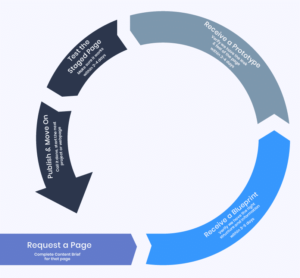How To Use Google Search Console to Build Your Content Plan
Want to build a winning content strategy without guesswork? Google Search Console is your secret weapon for uncovering search insights, improving website performance, and crafting data-driven content that ranks. Here’s how to use it effectively!
Creating a winning content plan starts with understanding how your website performs in search engines. Google Search Console (GSC) is one of the best free tools available for gaining these insights. It’s also a tool that we have used several times for our own clients as we explore opportunities for their website based on data that we extract from GSC.
If you haven’t already set up Google Search Console, then this guide is for you.
(If you find the instructions on what to do with Google Search Console, too technical, I added a “lazy” list at the end.)
1. Connect Your Site to Google Search Console
Before anything, make sure your website is connected to GSC. If it isn’t:
- Go to Google Search Console.
- Sign in with your Google account.
- Add your website as a property.
- Verify ownership through one of the available methods (HTML file upload, DNS verification, Google Analytics, etc.).
2. Analyze Search Performance Data
Navigate to the Performance tab in GSC. This is where the magic begins.
- Clicks: See which pages get the most traffic.
- Impressions: Identify which pages appear most frequently in search results.
- CTR (Click-Through Rate): Find pages with high impressions but low CTR. These pages are opportunities for optimization.
- Average Position: Check your ranking for target keywords.
Tip: Use date filters to compare performance over time and spot trends.

Here’s an example of what it might look like inside Google Search Console.
3. Identify Top-Performing Pages
Review pages that receive the most clicks and impressions. Ask:
- Can I expand or update this content?
- Are there related topics I can cover?
Use these insights to create supporting blog posts, guides, or videos.
4. Discover New Content Ideas with Queries
Under Performance > Queries, see what search terms people use to find your site.
- Look for Question-Based Queries: Turn frequently asked questions into detailed content pieces.
- Check Long-Tail Keywords: Target specific, lower-competition keywords.
Pro Tip: Export queries into a spreadsheet for deeper analysis and content planning.
5. Fix Underperforming Content
Pages with low CTR but high impressions need improvement. Consider:
- Updating Meta Titles and Descriptions: Make them more compelling.
- Improving Content Quality: Add visuals, improve readability, and ensure the information is up-to-date.
- Internal Linking: Link to these pages from other relevant site content.
6. Use the Coverage Report for Technical SEO Insights
Under Index > Coverage, GSC highlights pages with indexing issues. Fixing these ensures your content gets discovered.
- Errors: Fix any pages with critical errors.
- Excluded Pages: Review why certain pages aren’t indexed and resolve issues if needed.
7. Monitor Backlinks for Authority Building
In Links > Top Linking Sites, see who links to your content. Use this to:
- Identify popular content worth expanding.
- Build partnerships or guest post opportunities.
8. Create a Content Calendar Based on Insights
With all the data collected:
- Prioritize content updates.
- Plan new articles or videos based on query insights.
- Schedule regular content audits to keep your site fresh and relevant.
Now if you’re finding all these steps too overwhelming, don’t worry. I created this lazy list just so you can get started with some easy things to do in Google Search Console:
Easy Lazy List to Get Started with Google Search Console
If all this feels overwhelming, here’s a simple list to get you started fast:
- Log in to Google Search Console.
- Check the Performance Report: See what keywords bring traffic.
- Find Pages with High Impressions but Low CTR: Update titles and descriptions.
- Look at Queries for Content Ideas: Turn popular questions into blog posts.
- Fix Any Coverage Errors: Check the Coverage tab for issues.
- Review Backlinks: See who’s linking to you and explore partnerships.
- Set a Monthly Reminder: Spend 30 minutes reviewing these areas to keep your site competitive.
Google Search Console is a goldmine for content planning. If you know what you’re looking at, the data can greatly help you understand what brings people to your website and how to leverage that for more content ideas. But if you’re not sure how to set this up, feel free to contact us!








